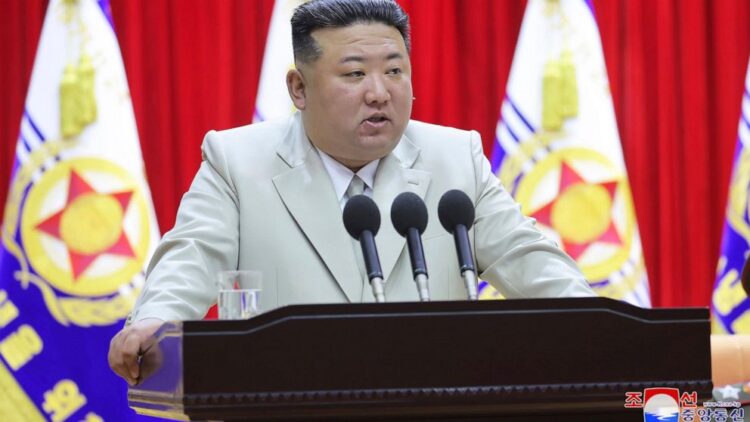By Ben Kerrigan-
In an alarming escalation of tensions, North Korea has carried out a simulated “scorched earth” nuclear strike on targets across South Korea.
It fired two short-range ballistic missiles in a drill simulating a “nuclear strike” on targets in South Korea, in response to ongoing joint military exercises by the United States and South Korea,
This provocative exercise is reportedly a direct response to joint military drills conducted by South Korea, Japan, and the United States this week.
The North’s state media has taken the unprecedented step of outlining the intricacies of this potential conflict, painting a grim picture of a war-ravaged region.
The simulated drill envisions a sequence of actions that start with repelling an abrupt invasion, followed by launching nuclear strikes on South Korea, and culminating in an occupation of its territory.
This detailed scenario, published by North Korean state media, showcases “simultaneous super-intense strikes” targeting various critical points, including military command centers, ports, and operational airfields in South Korea.
This display of military prowess comes on the heels of joint military exercises carried out by South Korea, Japan, and the United States. Pyongyang has consistently denounced these exercises, branding them as rehearsals for an imminent war.
The recent drill can be seen as North Korea’s unequivocal response, as it demonstrates its readiness to counter any perceived threats.
Amid these developments, North Korea’s leader, Kim Jong Un, has been encouraging his military to heighten their state of readiness. He has labeled the leaders of the United States, South Korea, and Japan as “gang bosses” whose actions increase the risk of nuclear warfare in the region.
Kim’s rhetoric underscores the growing tensions in the Korean Peninsula and his intent to assert North Korea’s presence on the global stage.
The gravity of this situation was further underscored when North Korea launched two short-range ballistic missiles into the sea, mere hours after the United States deployed B-1B bombers for allied air drills. The timing of this launch coincided with an ongoing push by the North Korean regime to enhance its military capabilities, with the intention of establishing itself as a formidable force.
The international community has responded with deep concern. Japanese Prime Minister Fumio Kishida condemned North Korea’s actions, asserting that they pose a direct threat to the peace and stability of the region.
In a stern statement, the Japanese government reiterated its commitment to intercepting North Korean missiles if they pass over its territory, a clear indication of Japan’s determination to safeguard its citizens.
As the situation unfolds, diplomatic efforts to defuse the escalating tensions remain paramount. The heightened rhetoric, military exercises, and provocative simulations highlight the precarious balance in the region.
The international community is watching closely, with the hope that cooler heads will prevail and that diplomatic solutions can be found to prevent further escalation.
While the simulated “scorched earth” strike serves as a disturbing reminder of the potential consequences of escalating conflict, it also underscores the urgent need for diplomacy and de-escalation efforts.
The world awaits a measured response from concerned nations to ensure that the Korean Peninsula can move toward a peaceful resolution, safeguarding the stability and security of the region.




